“Actyon!”
Any car with a name that sounds like the first word sung by Alicia Bridges on The Adventures of Priscilla, Queen of the Desert soundtrack version of the ‘70s disco classic, I Love the Nightlife, is crying out for attention.
But does the KGM Actyon, from the carmaker formerly known as SsangYong (from 1987, and Dong-A-Motor for 33 years before that) deserve to get the attention of medium SUV buyers against best-sellers like the Hyundai Tucson, Kia Sportage, Mitsubishi Outlander, Nissan X-Trail and Toyota RAV4?
Keep reading, because the latest offering from this intriguing new/70-plus year-old brand from South Korea is presented, priced and packaged like a pro ready for action, so let’s go!
Price and features – Does it represent good value for the price? What features does it come with? 9/10
9 / 10
If you love an underdog, you’ve come to the right place, because the Actyon – a portmanteau of action and young – is a minor player in a major league.
Medium-sized SUVs represent Australia’s largest automotive segment. So, to help get the ball rolling, even the ‘base’ K50 grade borders on bountiful.
Kicking off from $47,000, drive-away, you’ll find unexpected little luxuries like quilted leather and heated outboard seating front and back, powered and ventilated front seats, rear privacy glass, a heated steering wheel, multi-coloured ambient lighting, automatic walk-away locking, a powered tailgate (with motion sensors) and 20-inch alloys. Entry level, remember.
Plus, a space-saver spare wheel is fitted. Rural drivers thank you, KGM!
These come on top of most of the expected modern amenities, including climate control, embedded satellite navigation, a 12.3-inch touchscreen (alongside a same-sized electronic instrument display), wired Apple CarPlay/Android Auto, heated/powered folding mirrors, a reverse camera and parking sensors all around.
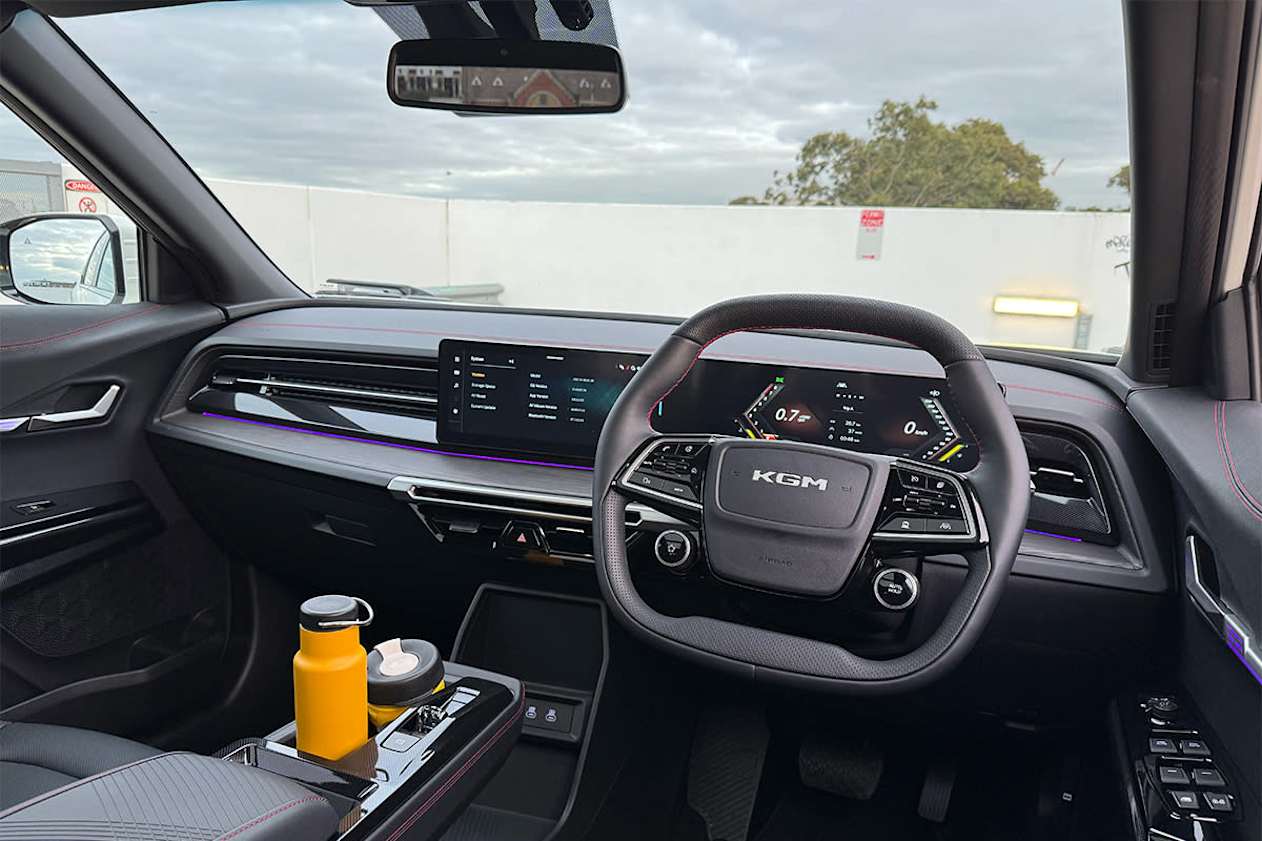
Thankfully, there’s also a decent wedge of advanced driver-assist safety, like autonomous emergency braking (AEB), lane-support systems and adaptive cruise control. More on those in the Safety section later on.
For an extra $3K, the K60, from $50,000, driveaway, adds a 360-degree-view camera, a panoramic sunroof with a solid shade (again, something Australians want), rear door blinds and a wireless phone charger.
But there are a few conspicuous omissions. No Actyon offers head-up instrumentation, digital radio, wireless CarPlay/Android Auto or the option of either a hybrid powertrain and/or all-wheel drive (AWD).
Still, from a value perspective, that’s a lot of kit for the cash. K60 money can’t buy you more than a basic RAV4 GX (albeit a hybrid), while you’re only at mid-grade Outlander LS, Sportage SX, Tucson Elite and X-Trail ST-L 2WD petrol.
And that’s not even taking in the Actyon’s extra length and girth that make this five-seater seem like it should offer a third row, or the very striking styling.
So far, so good.
Design – Is there anything interesting about its design? 8/10
8 / 10
KGM currently sells no fewer than three medium-sized SUVs of roughly similar dimensions.
There’s the more-compact Korando (which arrived in 2020), the bigger and boxier Torres (released in 2024) and, of course, the new Actyon. While all sit on variations of the same monocoque-bodied platform, the newcomer benefits from additional development (and funds) under KGM ownership.
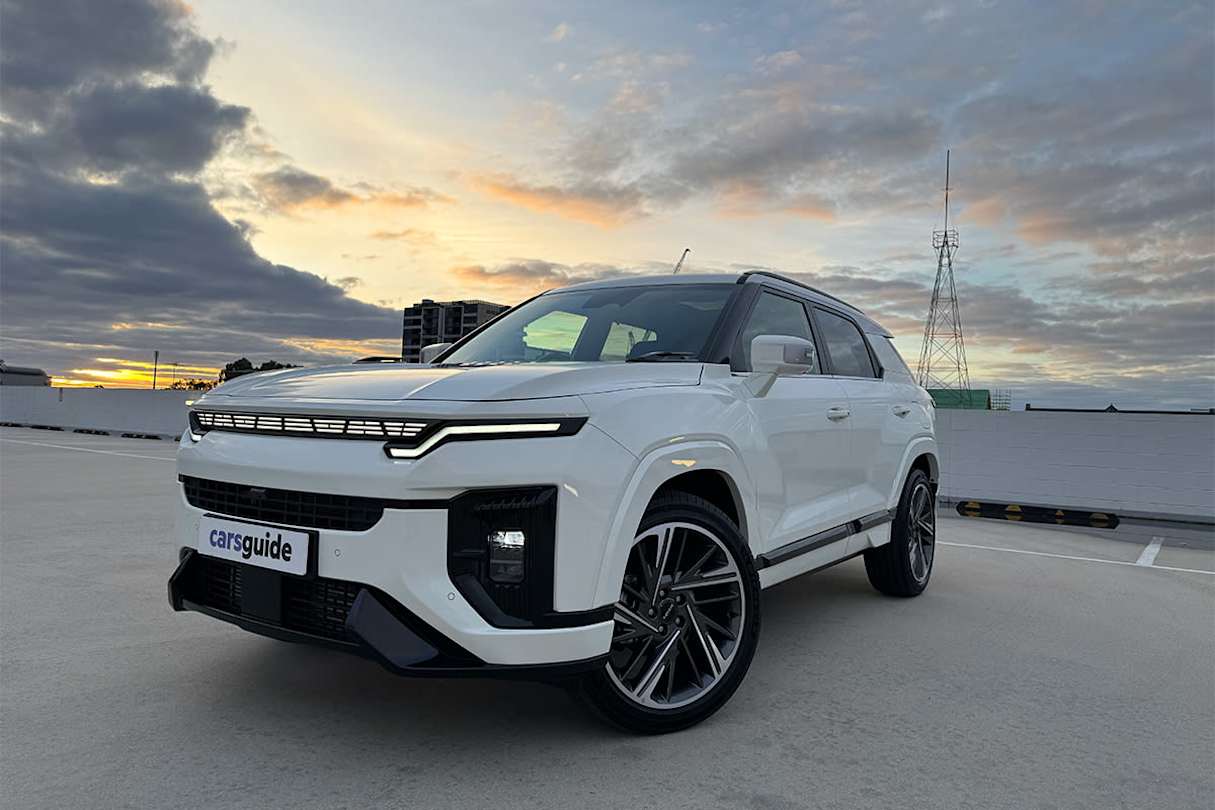
Not obvious unless viewed together, the Actyon is designed to be a sportier and more coupe-like take on the Torres, and is slightly lower at 1680mm as a result. But it’s also a bit longer at 4740mm and wider at 1920mm wide. Both share the same 2680mm wheelbase.
This may seem an extravagant niche for KGM to pursue, but it claims the original SsangYong Actyon (unveiled in 2005) beat the admittedly far-more influential BMW X6 by about three years, to become the world’s first productionised coupe-style SUV.
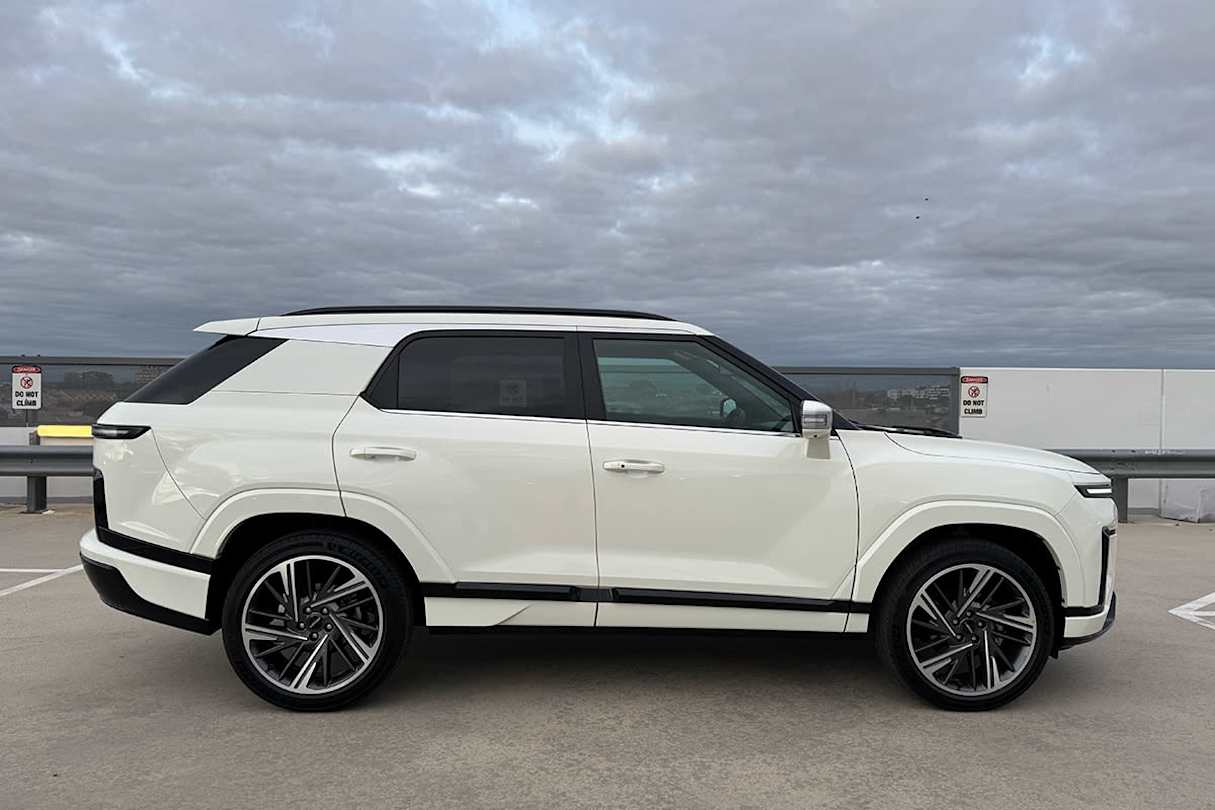
Whatever, today’s Actyon is a sleeker and perhaps prettier design than the Torres, with obvious Range Rover (Evoque, Velar) homages throughout, particularly when it comes to the lighting elements.
According to KGM, the grille’s lighting design is inspired by the four symbols found on the South Korean flag, representing heaven, earth, water and fire.
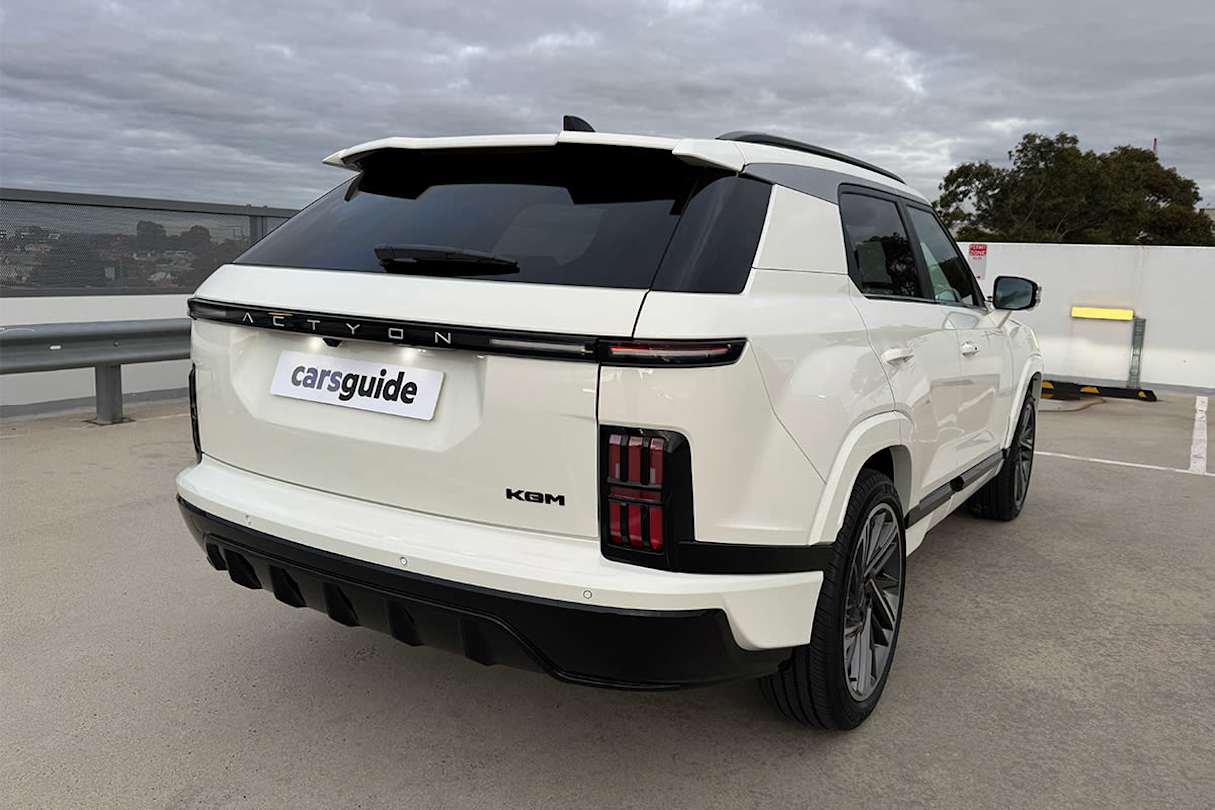
A nod to SsangYong’s reputation for tough, rugged vehicles are the controversial bonnet-mounted ‘handles’, a decent ground clearance rating of 206mm, squared-off wheel arches, unusually-wide C-pillars and clear Jeep Grand Cherokee overtones in the tail-light and other rear-end treatments.
What should be a visual mess seems to meld together cohesively regardless of influence, making the Actyon a distinctive, handsomely-offbeat design.
Practicality – How practical is its space and tech inside? 9/10
9 / 10
Inside is where the Actyon really gets into its groove, as an impressive, thoughtfully engineered family-sized SUV.
Big doors open up nice and wide, revealing a welcoming interior, with a sense of space and airiness, aided by deep windows, large mirrors, a lofty driving position and – in our top-spec K60 test vehicle – the vast glassy sunroof above.
The sporty front seats look and feel fab, fit like a glove and offer plenty of adjustability for a broad range of backs and bottoms alike.
A chunky square-ish steering wheel is good to grip, and, along with the instrumentation’s distinctively angular graphics, gives off lots of BMW vibes.
In fact, it is clear that KGM has been inspired by its latest round of up-spec Kia, Hyundai and even Genesis compatriots when it comes to the Actyon’s fit, finish and presentation. There seems to be no concessions of quality or ambience in order to maintain the Actyon’s keen pricing, and that’s remarkable.
Especially as most things work so well.
Let’s take the 12.3-inch central display. No physical buttons are present, unfortunately, and that’s probably partly due to the modern, clean, horizontal look that today’s designs seem to adopt wholesale.
However, the difference here is that it does not quite suffer the same pitfalls as normal software-based, electronics-heavy set-ups.
Along the left side of the main screen border is a row of permanent fast keys for home, media and climate. Up the top of it is a tab for a temporary menu for fast access to driving modes, stop/start on/off, traction control, camera views, vehicle settings and general settings. While down the right-hand side of the screen border and close to the driver for easy access is a swipe-left tab for a detailed computerised climate-control display. This takes up one-third of screen real estate.
Sounds complicated but it is actually disarmingly intuitive. You're still prodding and swiping screens, and that’s always a potentially-dangerous distraction. But at least nothing is more than a double action away. And almost all functions are also accessible in a dedicated widget home screen. Handy.
Helpfully, KGM also provides a big, physical button on the steering wheel as a ‘favourites’ fast-key to whatever you use most. We set ours for direct drive mode access.
Meanwhile, all of the Actyon’s other main cabin functions, including the climate control, endless storage, twin USB-C ports, varying interior lighting and audio sound of adequate quality, operate without complaint.
Now, while the upper-level materials seem premium, cold and hard lower plastics beg to differ, yet they neither look nor smell cheap, so that’s a win.
But all these favourable first impressions don’t mean there isn’t any room for fixes in this South Korean family truckster.
At the very top of that list should be turfing out the very, very fiddly drive selector. Imitating Volvo’s infinitely more-effective toggle functionality, it needs two, three and even four stabs at selecting Drive or Reverse before engaging. This is a form of torture.
Running close behind is a multimedia system that needs at least 20 seconds to boot up on initial start-up. Not every time, just after a period of inactivity. Painfully slow, it’s also a hazard as the reversing camera won’t operate during this time! Fail.
Other annoyances include the lack of digital radio and wireless Apple CarPlay/Android Auto, meaning you’ll need a cord to access both via your smartphone. And finally, that C-pillar is a massive blind spot.
Meanwhile, out back, all the expected (but not always available in others) amenities are present, like air vents, twin USB-C ports, overhead grab handles, reading lights, coat hooks, a folding armrest with cupholders and an abundance of storage.
But there is also a shocking number of surprise and delight features, including electric front passenger seat adjustment – for slide and recline, adjustable backrest angles, outboard seat heaters, side window blinds, tablet holders incorporated into the back of the front headrests, shallow pockets for smartphone storage set within the larger map pockets, huge door pockets that can hold a 1.5-litre bottle and a back-row speaker-mute function for weary rear-seat travellers needing peace.
When parked, there’s enough space with the backrests dropped for a 180cm person to sleep flat on their back, highlighting the 1440 litres of cargo capacity, or an impressive 668L with all five seats up.
The only note here is that there is no luggage cover to hide valuables (or snooze underneath). Lucky the glass is all heavily tinted. Beneath the floor is a space-saver spare wheel, thankfully.
Overall, then, the Actyon’s cabin is a cavernous, classy and well-equipped affair.
Under the bonnet – What are the key stats for its engine and transmission? 6/10
6 / 10
A familiar unit if you’re an existing Korando or Torres driver, the Actyon uses a 1.5-litre, four-cylinder, direct-injection, turbo-petrol engine.
Delivering 120kW of power at 5400rpm and 280Nm of torque between 1500-4000rpm, it drives the front wheels only at this stage via a six-speed torque-converter auto supplied by Toyota-owned Aisin.
With a power-to-weight ratio of nearly 73kW per tonne, it falls behind the larger-capacity 2.5-litre non-turbo alternatives as found in the Mazda CX-5, but matches rival 2.0-litre non-turbo units as used in the Sportage and Tucson.
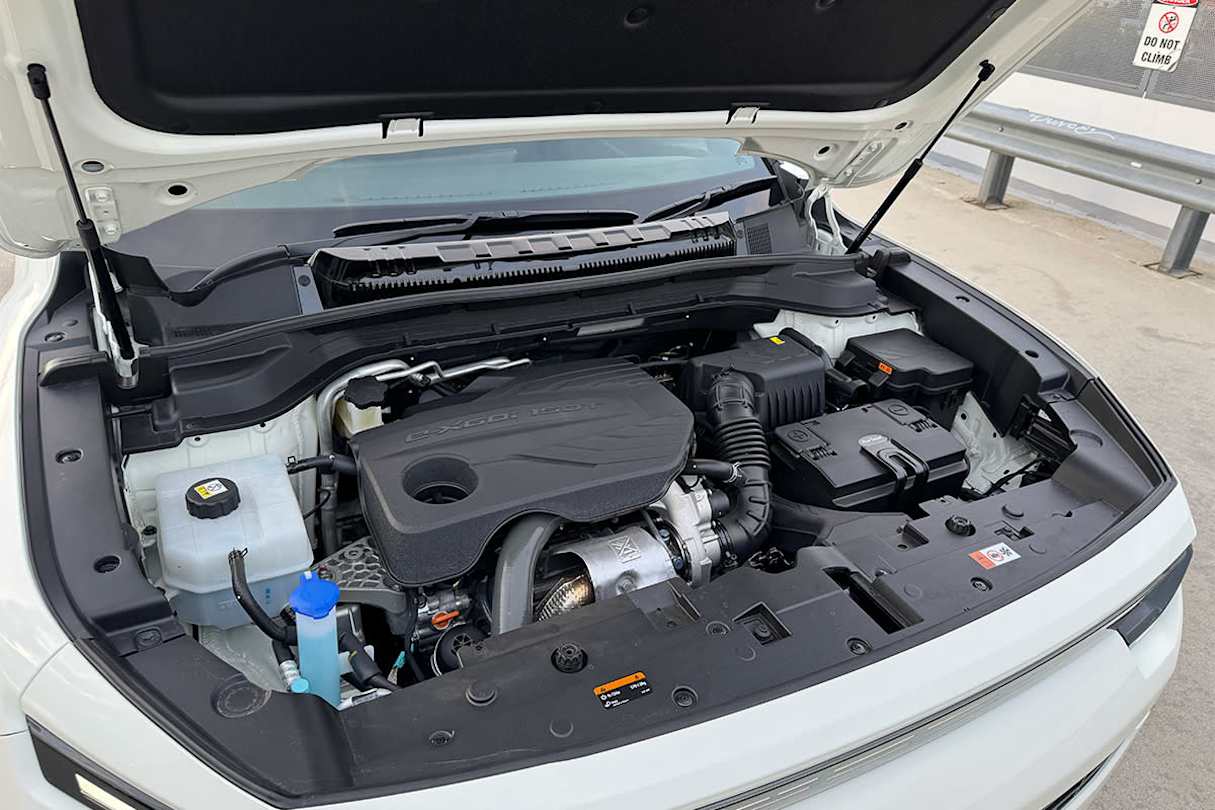
A trio of driving modes are offered – 'Normal', 'Sport' and 'Winter' (to control traction in slippery conditions) – while a handy pair of paddle shifters allow for some manual-ratio manipulation, though it will still change up automatically rather than bounce on the rev-limiter.
The KGM also follows class convention in its double wishbone front and multi-link independent rear-suspension set-up, though it boasts higher-than-usual ground clearances for a front-drive medium-SUV that’s resolutely not an off-roader.
Towing capacity is rated at 1500kg with a braked trailer and 750kg unbraked.
Efficiency – What is its fuel consumption? What is its driving range? 6/10
6 / 10
Without even mild-hybrid-style electrification to help improve efficiency, how does the Actyon perform when it comes to fuel economy?
The official combined cycle (urban/extra-urban) average consumption figure is 7.6L/100km with a CO2 emissions rating of 174g/km.
Which might not seem too bad, but remember this one likes to sip from the 95 RON premium petrol bowser. Filling the 50-litre tank should result in about 655km of range, on average.
So much for the theory. During our time with the Actyon, we recorded a disappointing 10.3L/100km – though it’s worth keeping in mind this included performance testing which tends to drain the tank a bit harder.
Driving – What's it like to drive? 7/10
7 / 10
Okay, this the best-driving KGM ever. No shocks there, as this is the first model under the company’s new stewardship.
But it’s also the best SsangYong ever. Faint praise maybe, considering how off-road-biased and workhorse-like so many models were/still are, yet the Actyon can hold its head up high in more-sophisticated circles.
Not that pressing the starter button reveals that straight away.
With a dinky capacity and hefty, circa-1650kg mass to overcome, the 120kW/280Nm 1.5-litre turbo four needs plenty of revs to get going, meaning there’s a moment of initial lag before the speed starts piling on. Not great if you’re in a hurry. And it's pretty vocal to boot.
Essentially, the Actyon regularly has to work harder than larger-engined alternatives to achieve the same result. A quick power-to-weight calculation tells the story: 72.8kW/tonne versus 85.6kW/tonne for the 1578kg, 135kW/245Nm 2.5-litre Nissan X-Trail.
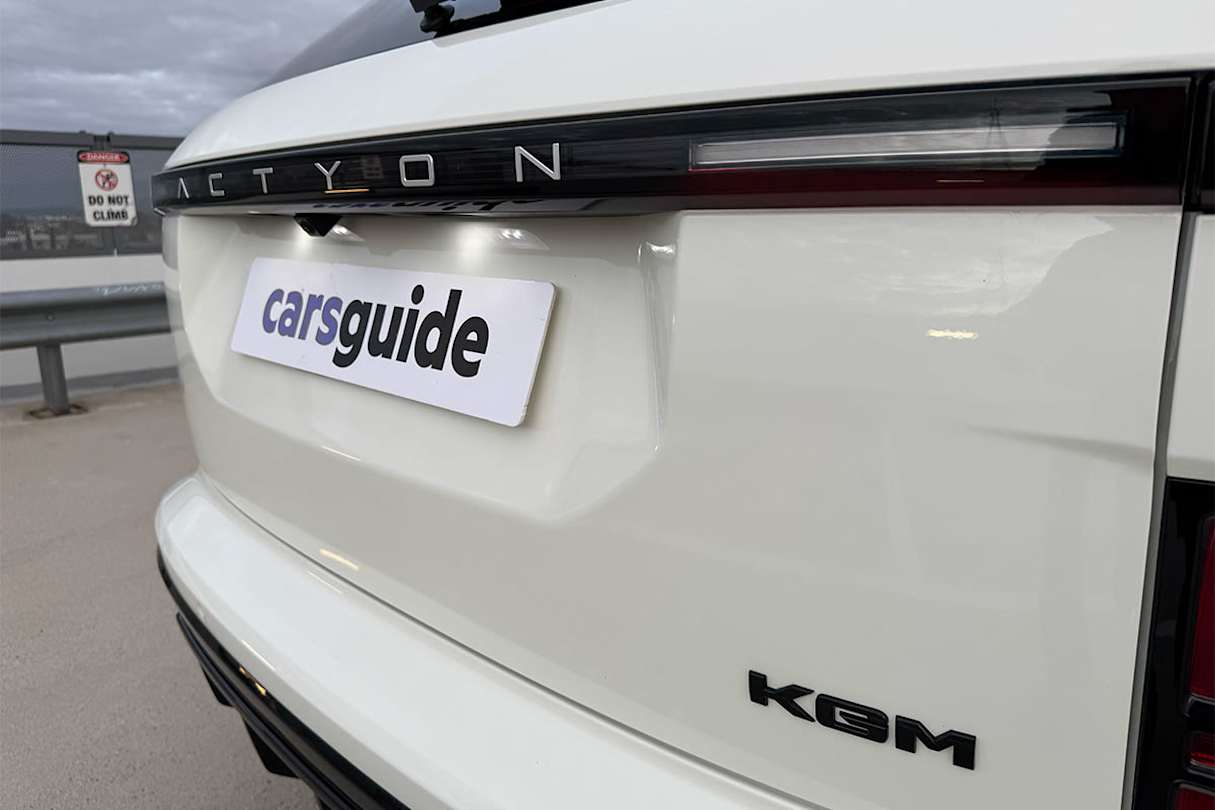
But, once on the move, there is a decent wad of torque for spirited acceleration as well as smooth throttle responses, and enough in reserve for sufficiently quick highway overtaking. We clocked 9.7 seconds for the 0-100km/h sprint.
Three driving modes are offered – Normal, Sport and Winter. Sport holds on to the ratios for a big longer, and is best suited for open-road driving.
More torque wouldn’t go astray, though, especially when the car is fully laden.
And the six-speed auto transmission, whilst smooth, can also be slow to react to downshift requests. The abrupt and clumsy stop/start system doesn’t help when moving off the line again, either.
Things improve when on the move, aided by a handy set of paddle-shifters when you’re in the mood for some manual-mode ratio manipulation, though the software does upshift if you forget.
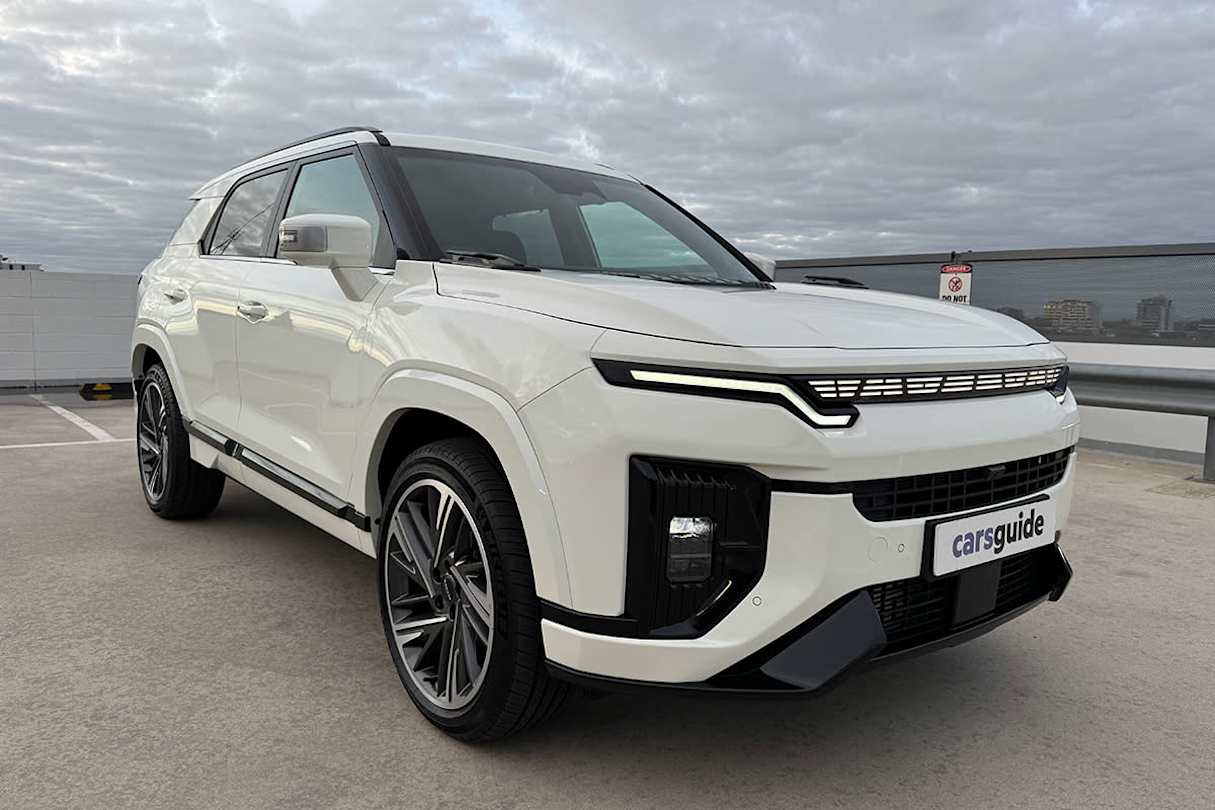
In the wet the KGM also feels planted. And though it does not take a lot to spin the sticky Michelin-shod front wheels, it remains composed. An AWD option would probably be a welcome addition to the range.
You’d never call the Actyon a sports SUV, but there is a keenness to the chassis tune, reflected in the strong braking and positive steering – the latter being an absolute first for a SsangYong product.
Light enough around town to be easily manoeuvrable (with help from deep windows and surround-view cameras), it weights up nicely and consistently at speed without ever feeling too heavy, and provides just enough road grip and feedback so you can confidently push on knowing what the front wheels are doing. That’s all you can ask for in a family SUV.
Plus, the advanced driver-assist safety (ADAS) tech is pretty reigned in most times, only making itself unwelcome with occasional lane-keep assist wheel-tugging and drowsy-driver alert paranoia.
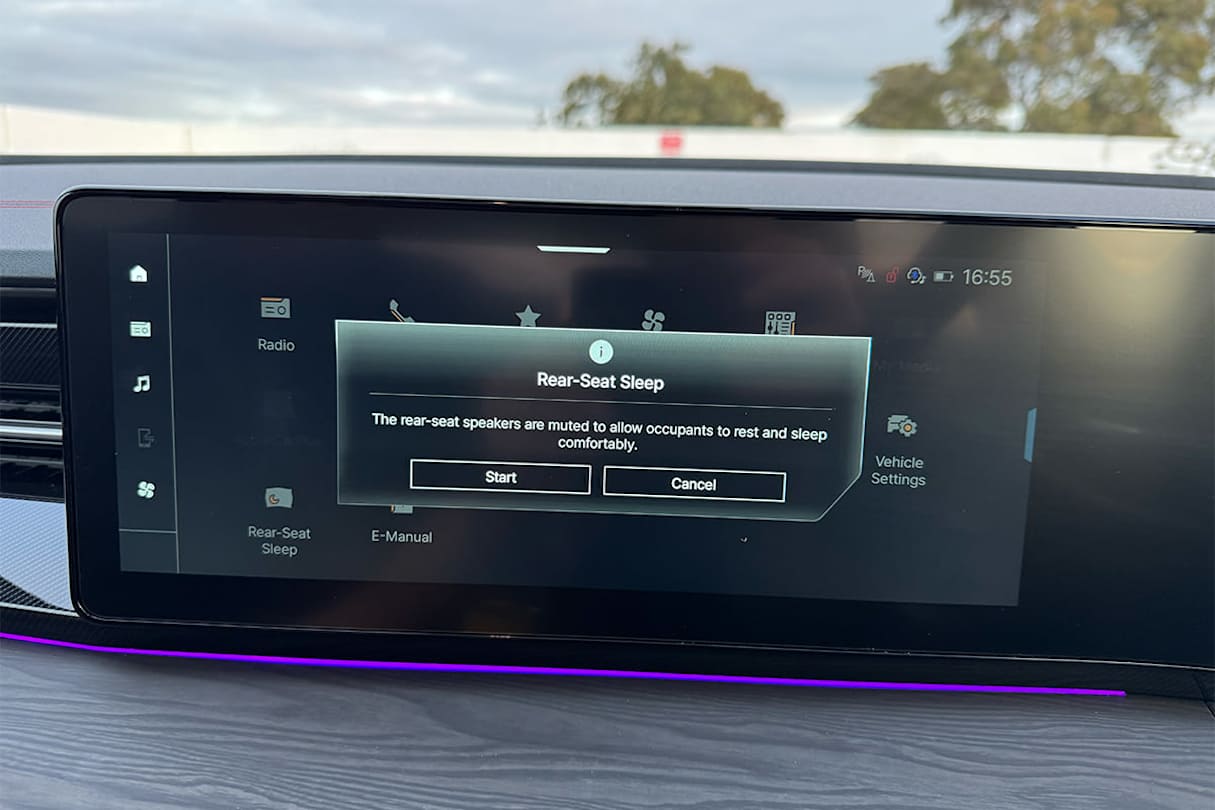
Thankfully, a quick swipe up on the multimedia screen will extinguish these and others quickly.
Now, there’s a bit of body lean if you want to make your occupants car sick through tight corners, but a bigger problem is the Actyon’s busy/bouncy ride on anything other than smooth roads.
Blame the lack of suspension travel and standard 20-inch wheels, because they do not absorb enough of the bad stuff.
It’s worse with one person, and the ride improves with more bodies on board, but a recalibration and perhaps smaller alloys or adaptive dampers need to be on KGM’s to-do list. It’s the only dynamic blot. Our advice is to try this on your regular commute route before you buy.
Speaking of blotting things out, the Michelin tyres’ noise-reduction abilities seem to work, and impressively at times, though adding the missing rear luggage cover might be a more-effective sound barrier over Australian coarse bitumen highways.
Still, the Actyon is neither dull nor tiring to drive. And for a new brand offering a value SUV challenger proposition, that’s better than most nowadays.
Safety – What safety equipment is fitted? What is its safety rating? 8/10
8 / 10
And speaking of challenging, how does the KGM newcomer behave in independent crash testing?
We can’t tell you, because at the time of recording, no results had been released. So, there is no ANCAP rating.
But the KGM looks like it can deliver the goods, offering a host of advanced driver-assist safety systems, including AEB, blind-spot warning, lane-keep assist and rear cross-traffic alert. And it's worth noting this tech is mercifully unintrusive (see the Driving section).
Eight airbags are also fitted (including a front-centre and full head/curtain coverage), along with adaptive cruise control, high-beam assist, front and rear parking sensors, tyre pressure monitors and LED daytime running lights.
Last, but not least, a pair of ISOFIX child-seat latch points and a trio of hooks for tether straps are fitted across the rear seat.
Ownership – What warranty is offered? What are its service intervals? What are its running costs? 8/10
8 / 10
Owners also experience the peace of mind of a seven-year/unlimited kilometre warranty, as well five years of roadside assistance, which is better than most rivals in 2025.
Service intervals are at every 12 months or 15,000km, with alternating capped pricing of $338 or $442 per annum for the duration of those seven years.
Clearly, with such a competitive aftersales program, KGM is gunning for a firmer foothold in the most fiercely fought family SUV segment in Australia.
Verdict
Is all of the above enough to spur you into Actyon? It should be, or at least make your medium-SUV shortlist.
Bold styling, keen pricing, an inviting cabin, loads of space and an involving driving experience make the new KGM everything we wanted from but never really got from the old SsangYong.
A bit more torque, a little less thirst and a softer ride would make a surprisingly good family-friendly medium SUV a real crowd pleaser.
We’re looking forward to what else KGM has coming in the future.
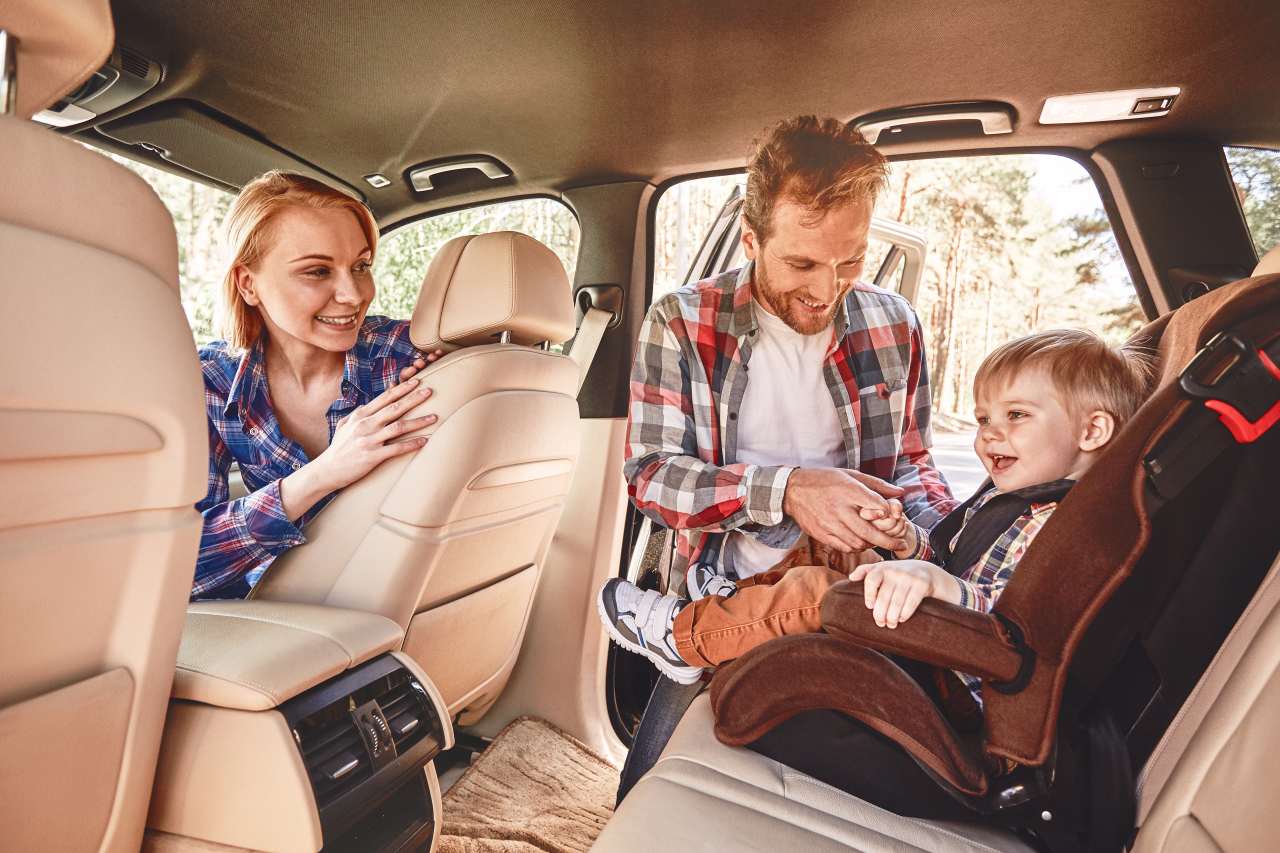


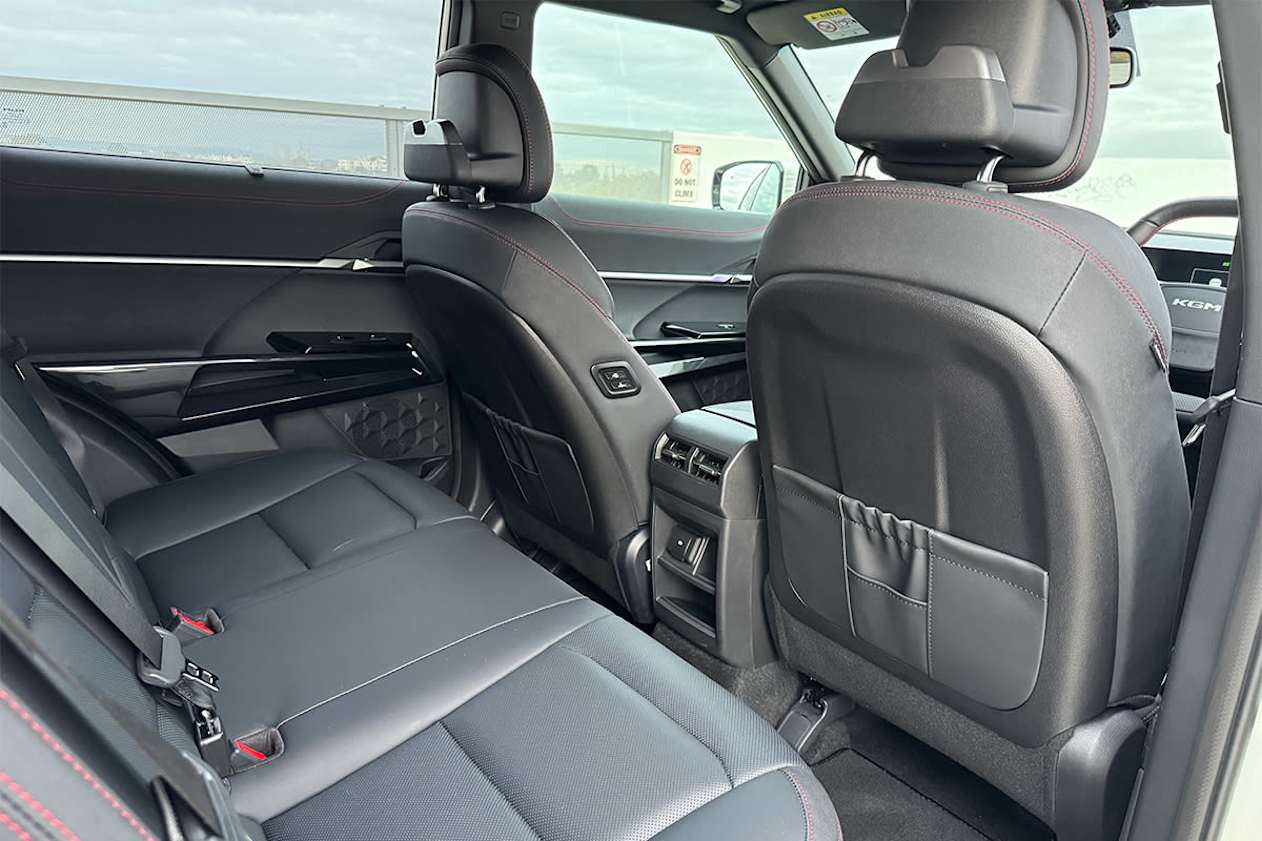

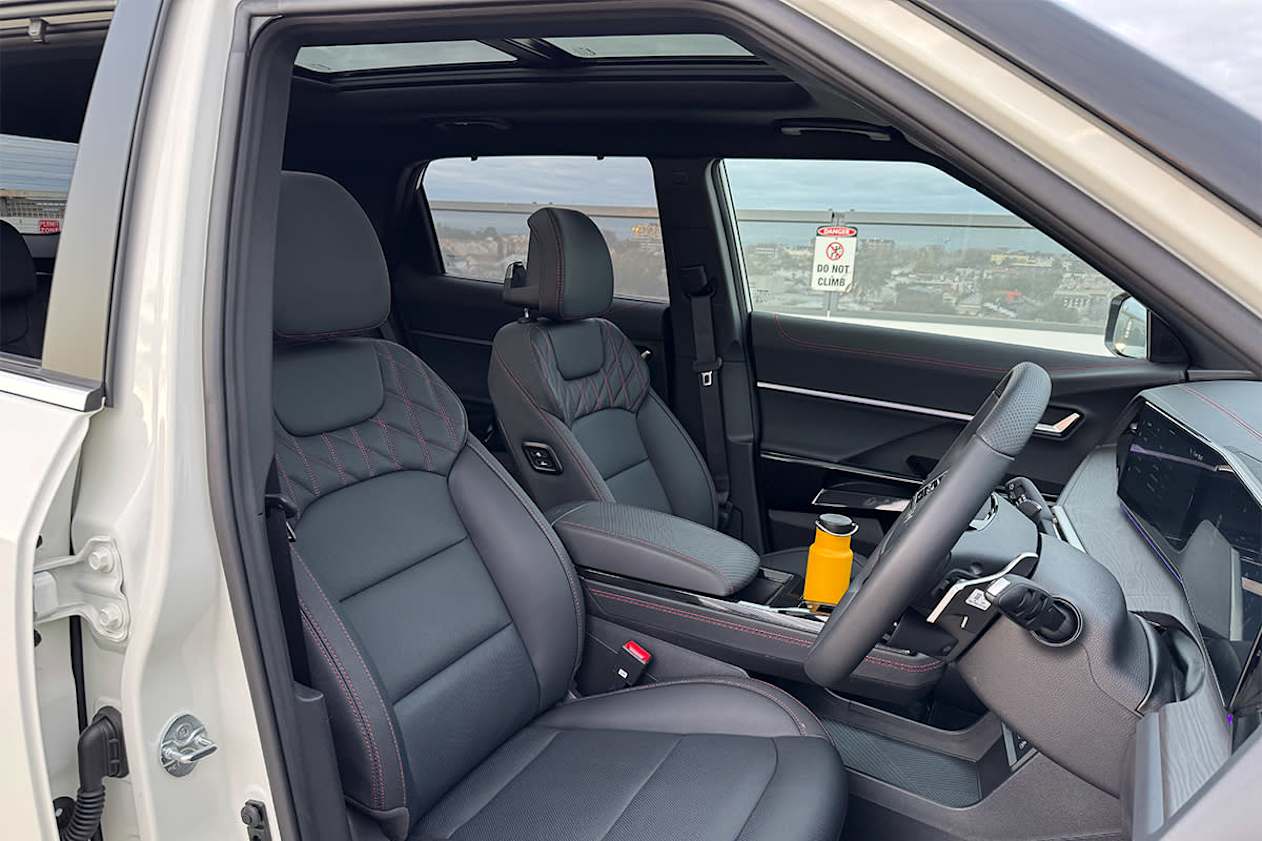




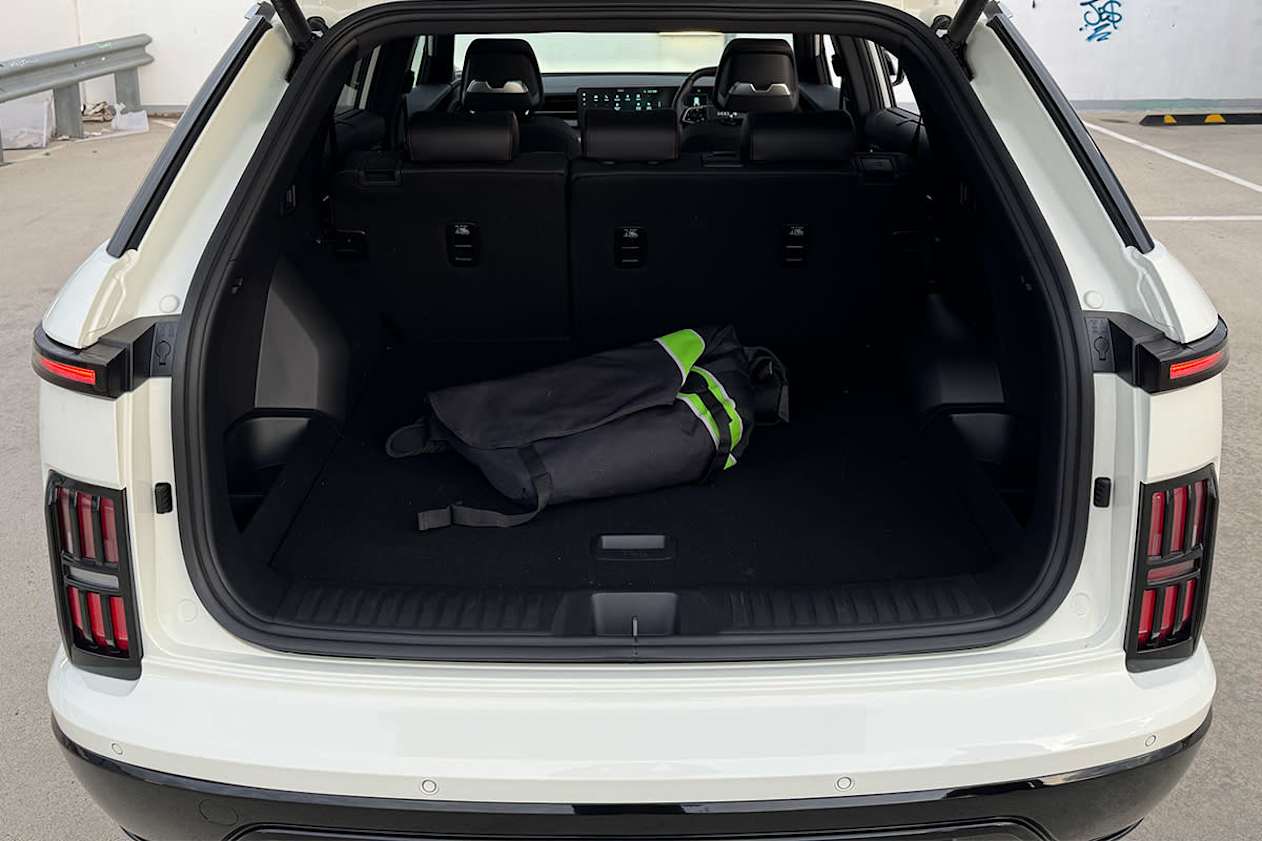
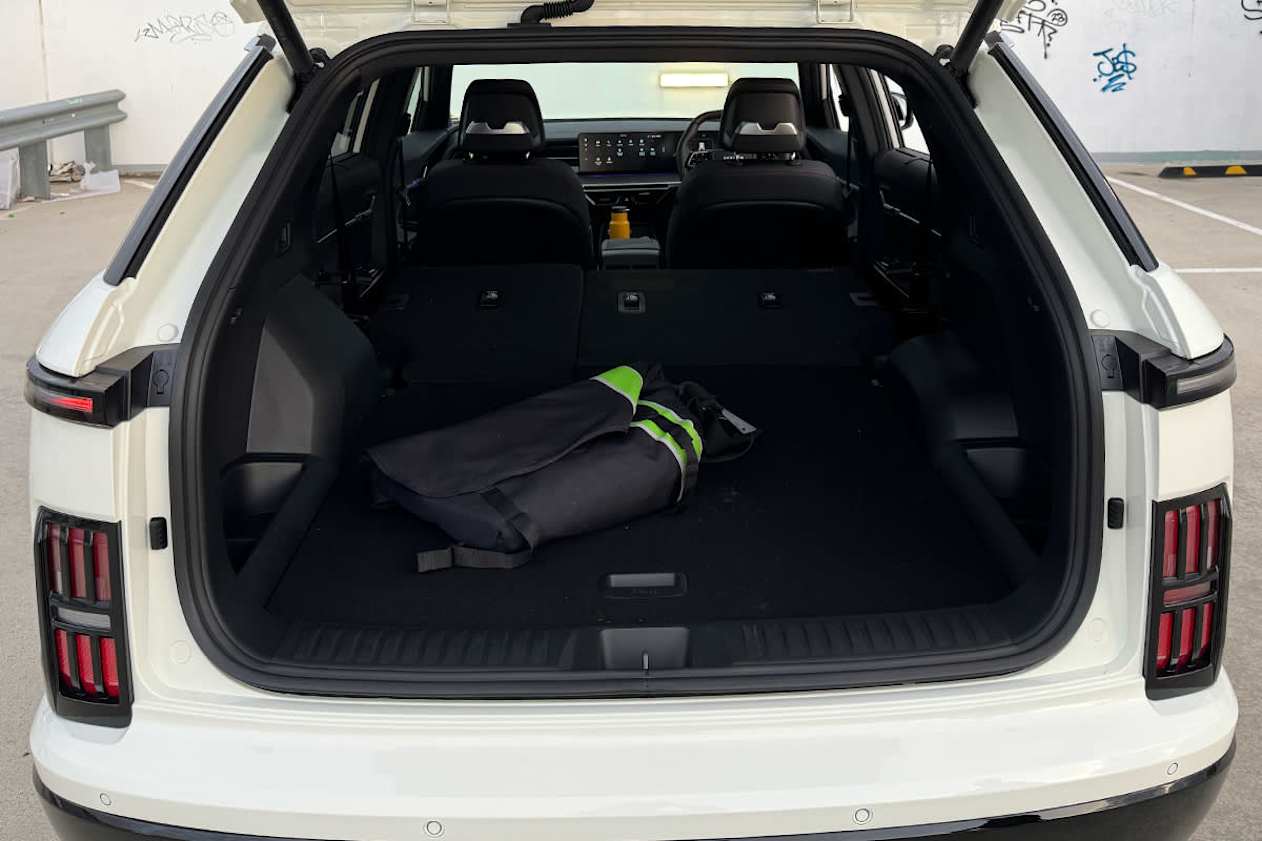

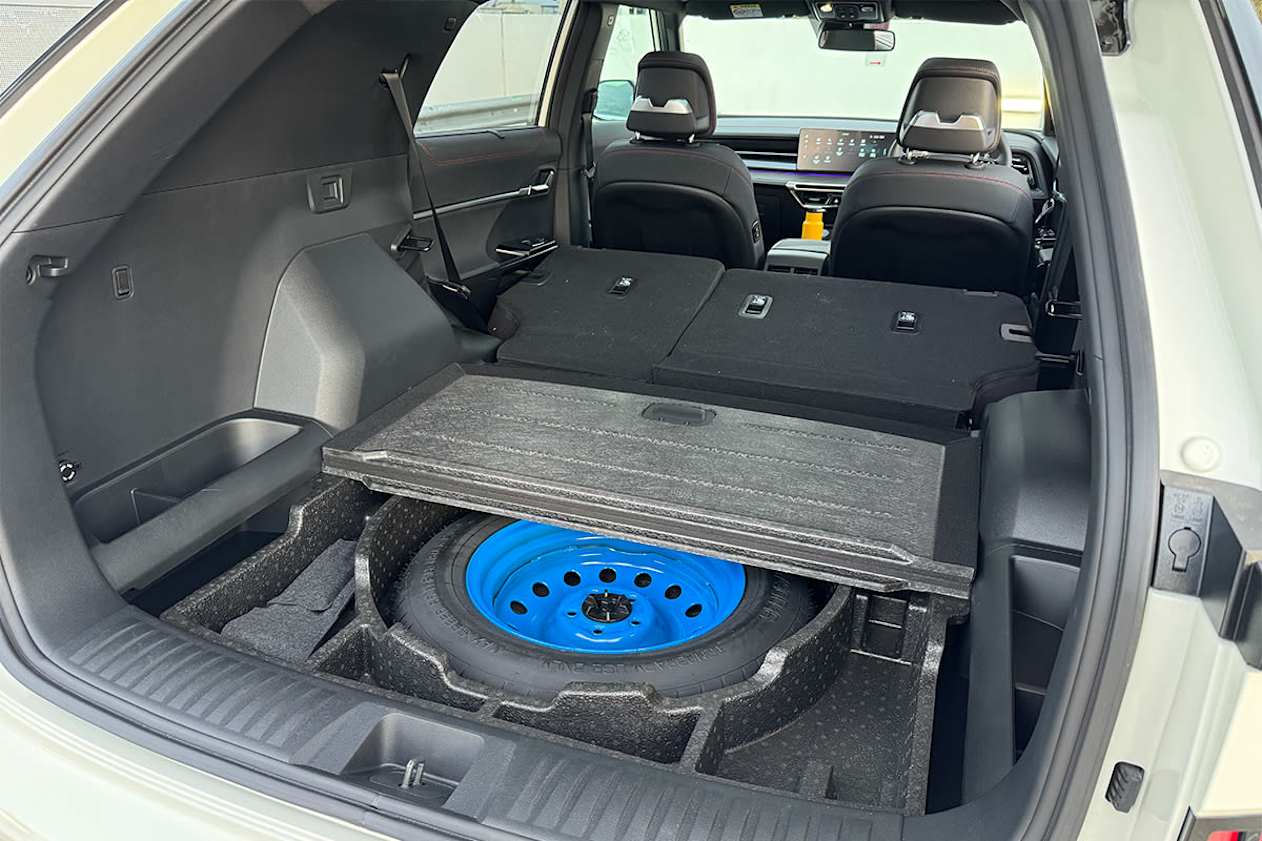
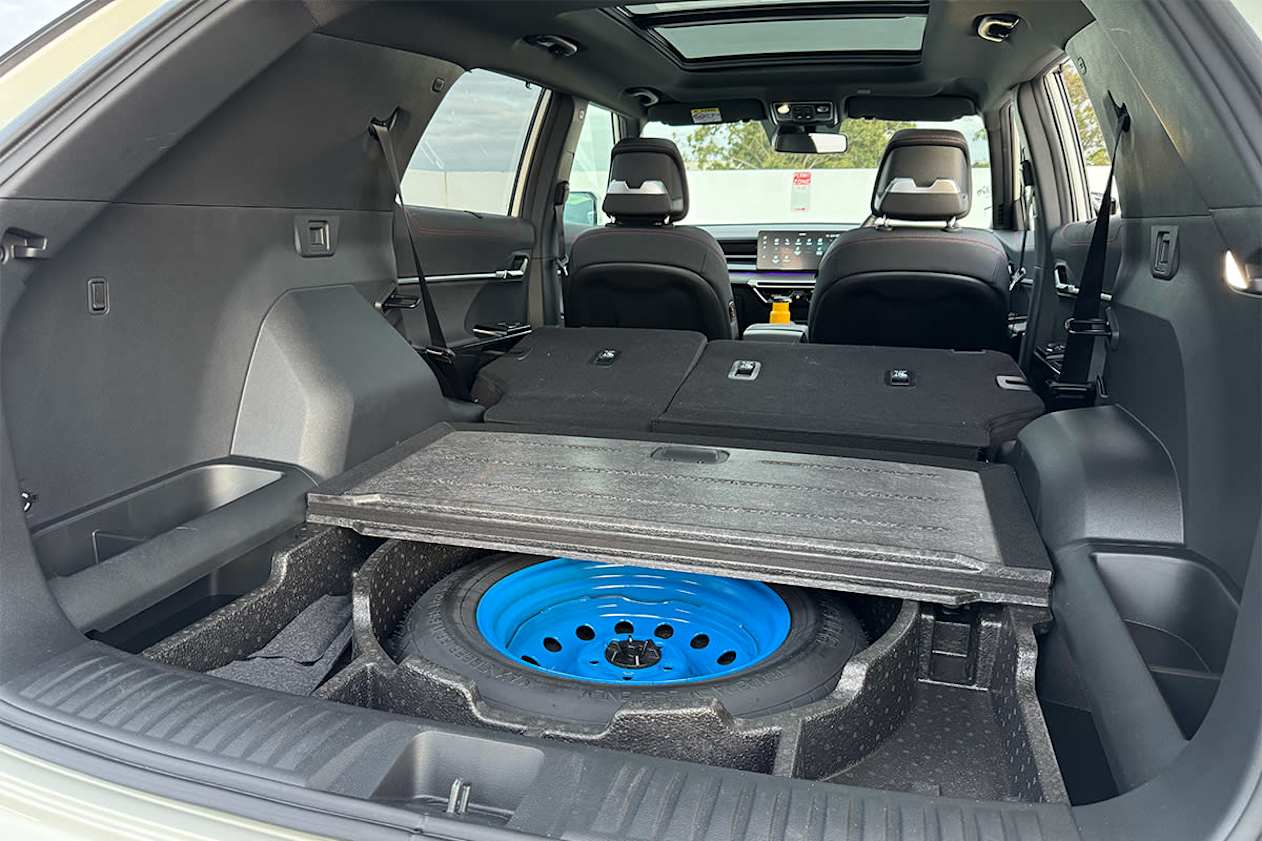





.jpg)
.jpg)
.jpg)
.jpg)
.jpg)
.jpg)
.jpg)